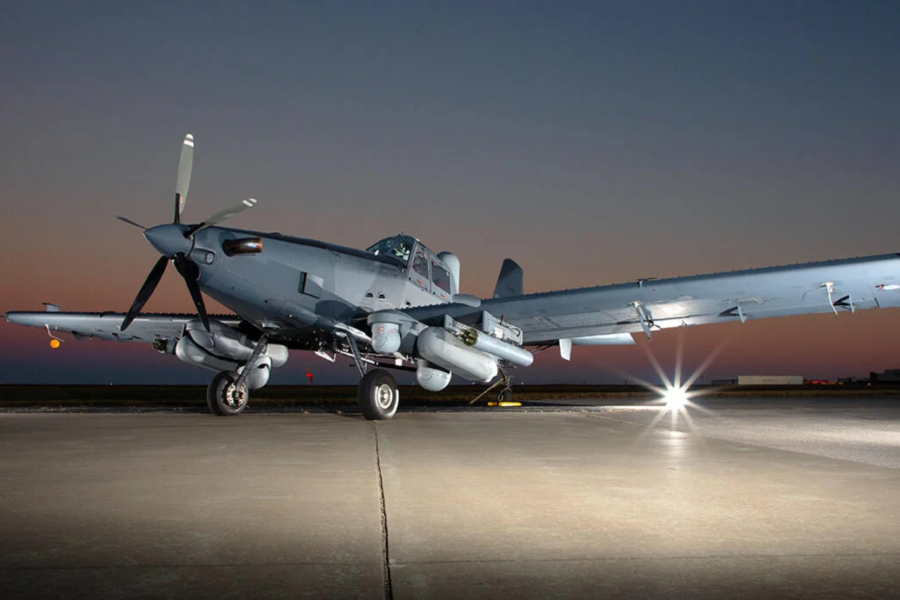U.S. Special Operations Command has awarded a contract for its Armed Overwatch program, selecting L3 Harris Technologies’ AT-802U Sky Warden as the winner of its competition for a low-cost aircraft to fly surveillance and strikes in austere locations, the combatant command announced Aug. 1.
The deal could be worth up to $3 billion and will include 75 aircraft along with training systems, mission planning systems, support equipment, spares, and logistics support. Initial operating capability is expected in fiscal year 2026, with full operating capability following in 2029.
“Armed Overwatch answers a critical need for U.S. Special Operations Command to conduct a wide range of operations globally in support of the National Defense Strategy,” SOCOM Commander Gen. Richard D. Clarke said in a statement. “This rugged, sustainable platform will operate in permissive environments and austere conditions around the world to safeguard our Special Operations Forces on the ground.”
L3 Harris unveiled Sky Warden in May 2021 as part of a collaboration with aircraft manufacturer Air Tractor. The companies claimed that the aircraft, based on Air Tractor’s agricultural AT-802 airframe, features the largest payload capacity of any single-engine turboprop aircraft. The aircraft has previously also been modified for firefighting missions.
Sky Warden was selected as one of five finalists for the Armed Overwatch program that same month, with flight demonstrations taking place throughout 2021 at Eglin Air Force Base, Fla.
That demonstrator will now be “rapidly” modified into a production configuration and provided to SOCOM for weapons system testing, L3 Harris said in a press release. That’s expected to take six months, followed by production starting in 2023, first at Air Tractor’s facility in Texas, then with modifications occurring at L3 Harris’ facility in Oklahoma. The low-rate initial production lot will consist of six aircraft.
Sky Warden will replace the Air Force’s U-28 Draco fleet and will be both an intelligence, surveillance, and reconnaissance aircraft and one that is capable of conducting light strikes in permissive environments. It beat out Leidos’ Bronco II, MAG Aerospace’s MC-208 Guardian, Textron Aviation Defense’s AT-6E Wolverine, and Sierra Nevada Corp.’s MC-145B Wily Coyote.
Testifying to Congress in April, commander of Air Force Special Operations Command Lt. Gen. James C. “Jim” Slife said the Armed Overwatch program was designed to reduce the need for so-called “air stacks” of specialized, single-role aircraft to fly together over objective areas.
In particular, the aircraft will likely be used to counter terrorist threats, often in coordination with troops on the ground.
“The idea of the Armed Overwatch platform is [that] it’s a modular capability and so you can outfit the aircraft with a robust suite of sensors that will exceed what is available with most dedicated ISR platforms today. Or you can outfit the platform with a robust suite of precision munitions,” Slife told lawmakers. “It really depends on the mission, and so clearly, the Armed Overwatch platform is not a panacea for every tactical situation that a ground force might find themselves in. But for what we envision the enduring counter-[violent extremist organization] mission looking like, we think it’s a prudent investment.”
In a release touting the contract award, SOCOM pointed to Sky Warden’s ability to carry modular payloads, its cheap operating costs, and its ability to operate from austere fields.
